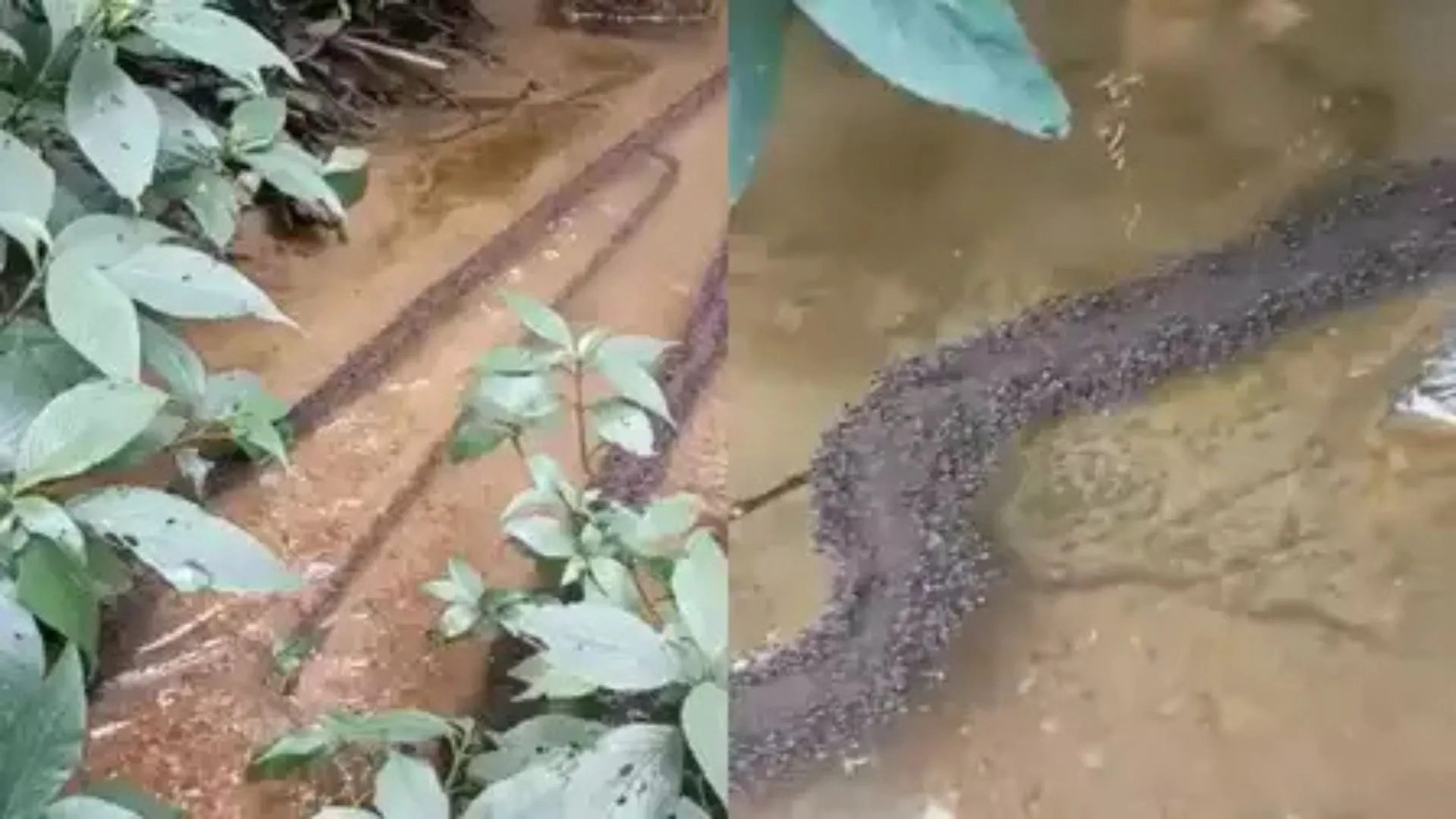Ants are among the most hardworking creatures on Earth, known for their impressive coordination and ability to construct intricate structures using their own bodies. One such example is a bridge formed by ants, which stays intact and suspended over flowing water.
“I see that you’re wondering—these are ants,” says the voiceover in the footage, which follows a formation on the forest floor. “See where they came from…all the way to the stream. How were they able to create a bridge by themselves? And then walk on the stream all the way like this?”
“To me, it’s the seventh and the eighth wonder of the world. I can’t imagine this. This is so incredible. See, ants! How did they do this? Tell me, what magic did they use? See? They continued, they got there. Can you imagine this? See.”
Ants build a bridge to cross water. pic.twitter.com/yvNcdPHJ08
— Nature is Amazing ☘️ (@AMAZlNGNATURE) December 29, 2024
At first, the bridge appears to be tire tracks, but a closer look reveals a dense formation of ants, with hundreds of thousands linking together. Two parallel paths converge into a single route, which then bends and eventually disappears into the underbrush.
These bridges allow ants to cross streams while foraging or moving food in their rainforest habitats.
While larger brains are typically associated with greater intelligence, ants defy this idea. They achieve remarkable feats through swarm intelligence—a decentralized form of problem-solving where individual actions combine to create collective behaviors.
Ants don’t stop at bridges—they also build elaborate underground cities. These colonies feature a complex network of tunnels and chambers, home to millions of ants. The colony functions as a fortress, with a queen who lays eggs, workers who care for the young, and a food storage system that helps them survive harsher conditions.
Ant bridges also link the colony to the surrounding environment. Up to 20% of the colony may participate in creating and maintaining these structures, which provide essential ecological benefits, such as nutrient cycling and soil aeration.























